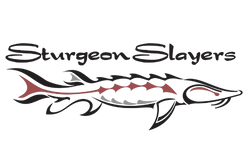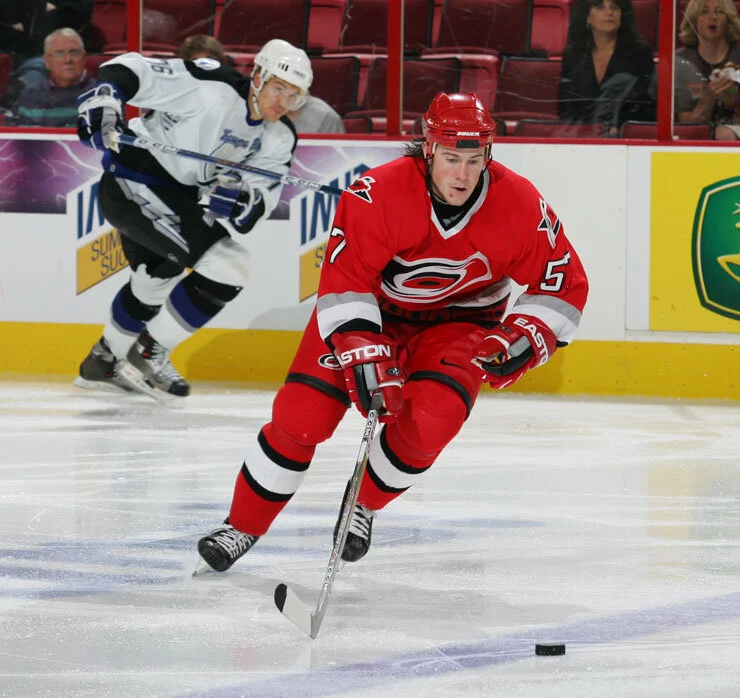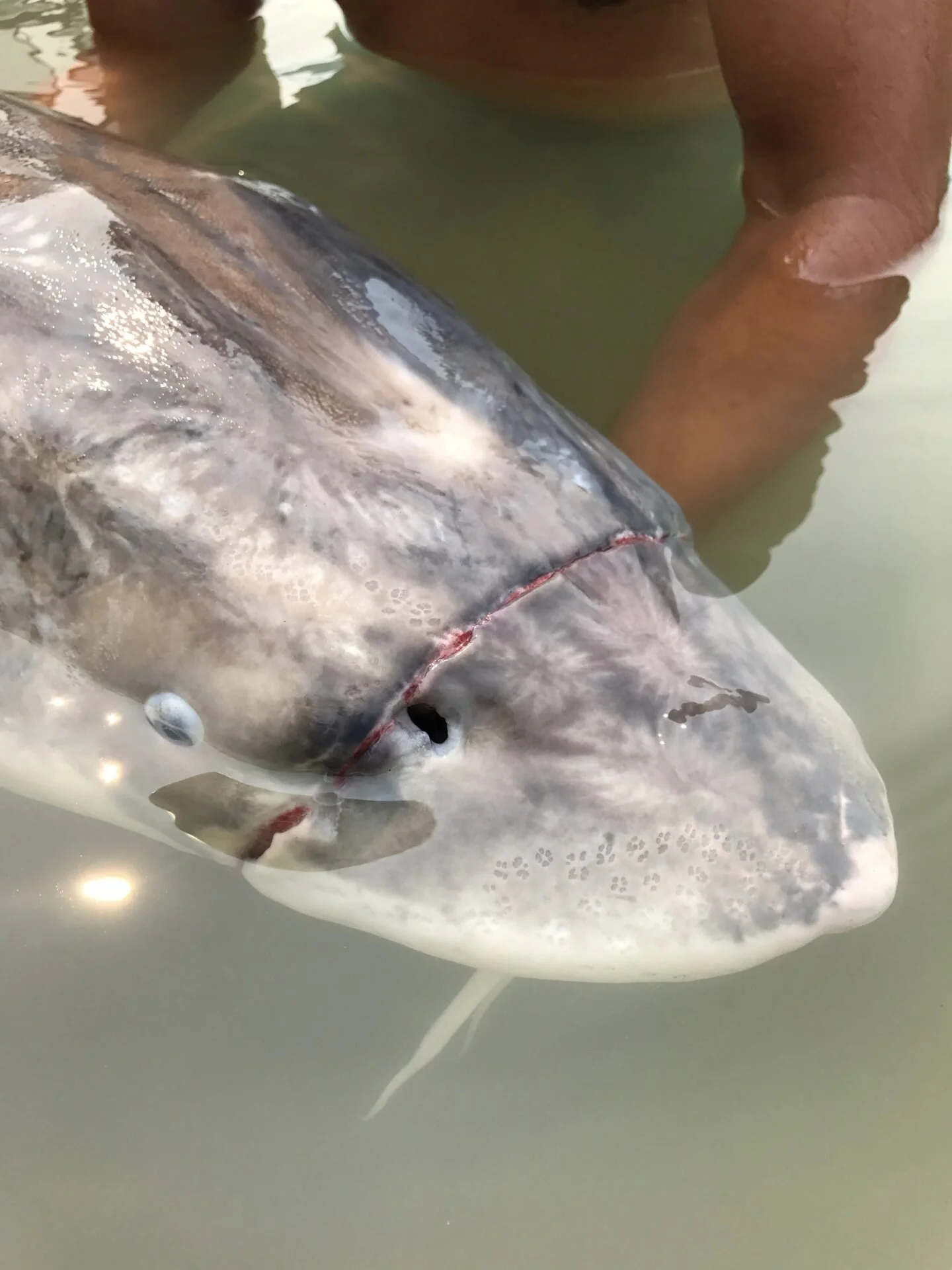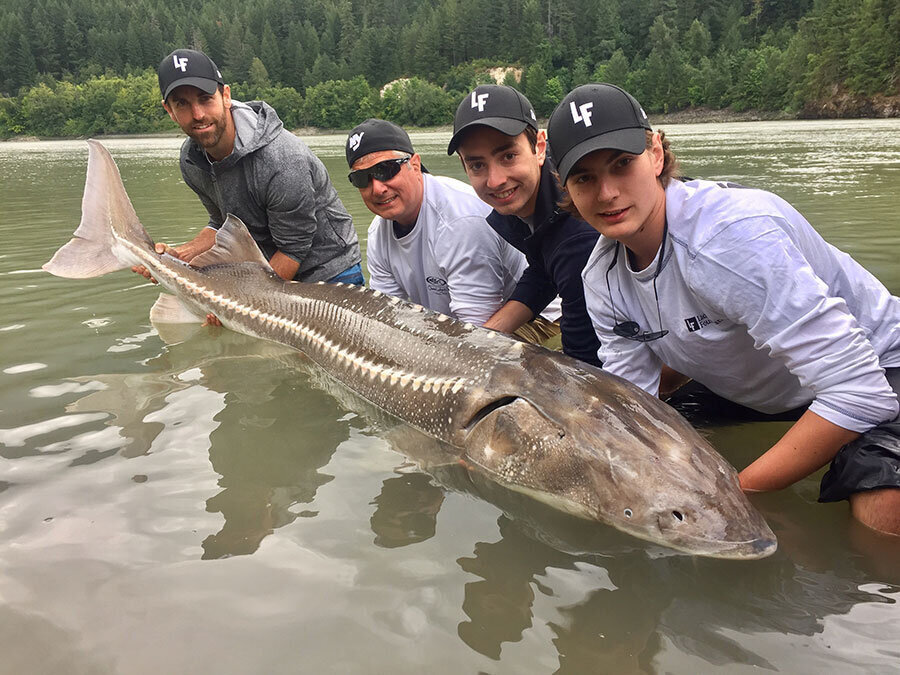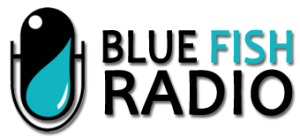Blue Fish Radio Interviews Kevin Estrada Of Sturgeon Slayers
Lawrence Gunther, the host of Blue Fish Radio sits down with Kevin Estrada of Sturgeon Slayers in a recent podcast to discuss a variety of topics.
The topics include Kevin’s background, when he first saw a Sturgeon when he moved to Chilliwack, British Columbia, the origins of Sturgeon Slayers, details about the incredible fish, conservation and so much more.
Click the audio player to listen to the full episode below!
Show Notes & Summary Below:
Kevin Estrada Playing Pro Hockey
0:00 - 01:24 Show introduction. It starts with a quote from the episode and Lawrence starts the show.
01:24 - 3:20 Lawrence and Kevin discuss the origins of Sturgeon Slayers in 2007, his professional hockey career, and a plane crash that cut his playing career short.
3:22 - 3:45 Kevin discusses seeing Sturgeon for the first time at 14 years old when he first moved to Chilliwack, British Columbia.
4:00 - 5:50 Lawrence and Kevin discuss the media and how a show from National Geographic, “Monsters Of The Rockies” is currently playing on Disney+.
5:50 - 8:11 Kevin discusses the tagging program and that on average, 7 out of 10 fish that are caught are tagged. However, that does not mean that 7 out of 10 fish are tagged within that year. A fish might be tagged once and does not get tagged a second time until 20+ years later. Only 7% - 11% of sturgeons are caught a second time in the same year. Many monster sturgeon may disappear to the ocean or other bodies of water to look for food. So it is common to catch a 6, 7, 8, 9 or 10+ foot sturgeon that has never been tagged before. The largest sturgeon ever caught in the tagging program was tagged for the first time last year and it was 11 feet 4 inches long.
Mariko Izumi With A Juvenile Sturgeon
8:12 - 10:05 Lawrence brings up the juvenile sturgeon tagging program. In 2008 when the Sturgeon tagging program started, the emphasis was on tagging larger fish. When the government first looked at the data, it was clear that there was not much data on the younger sturgeon population so things changed to try to tag more of them. Kevin explains that technology allows fisherman to locate sturgeon better, but it still takes work to get them to bite. Some literature states that some sturgeon do not eat for over a year!
10:06 - 10:40 Kevin discusses his work with the Chairman of the Fraser Valley Angling Guide Association, Marc Laynes, to start to work to tag juvenile sturgeon to see if they can identify that there is or isn’t a problem with the sturgeon population in British Columbia.
10:41 - 12: 24 Kevin discusses that a reason juvenile sturgeon were not caught was because it requires a different set of gear. You need tiny weights, tiny bait, and tiny hooks, which is much different than the normal fishing gear when going after larger sturgeon. Kevin and the Fraser Valley Angling Guide Association brought out Greg Andrusak, a Provincial Rivers Biologist, and they were able to land roughly 30 fish and 90% of them were never tagged before. Some of these fish were as small as 40 centimeters (15 inches). This experience got Andrusak thinking about why was there not more data about these smaller fish. Andrusak then put together a pilot program with the support of the province to collect more data. They found that angling was the most efficient, and safest (no mortality) way to collect the data on the sturgeons.
12:25 - 13:40 This new program allows them to gather data on 70-80 juvenile sturgeons fish per day, where in past years when it was not a priority, there would only be data on 70 (or less) juvenile sturgeons in a year. This new program allows them to understand that there are more juvenile sturgeon in the Fraser River than originally thought.
13:40 - 14: 40 They have taken precautionary measures and advocated to not fish in certain areas if the fish are spawning along with permanently closing three areas of the Fraser River that are common sturgeon spawning areas. However, now there is more data out there (because they are tagging a wide range of fish sizes and ages) so they can make more informed decisions about the health of the sturgeon population.
14:40 - 15:35 Lawrence speaks of his Sturgeon fishing adventure years back where he caught 10 or 12 juvenile fish on the first day. On the second day of his trip he focused all of his time on trying to land a large one.
15:35 - 16:15 Kevin explains that the focus of the Fraser Valley Angling Guides Association's priority is to monitor younger sturgeons and also how it appears that the biggest threat to their population is non-selective salmon harvesting.
16:16 - 18:05 Lawrence applauds the importance of conservation and Kevin discusses even if there is the science not available to make decisions, taking proper precautions are still very important.
18:06 - 20:31 Kevin discusses that the biggest concern he has is non-selective salmon harvesting, which includes gillnets and drift nets. Many sturgeon are ending up dead in these nets, which is why they are advocating for change. He believes more selective fishing is the answer.
20:31 - 21:50 Lawrence discusses that putting bycatch back into the river after they are caught by gillnets most likely results in the death of the fish and Kevin gives further details.
21:51 - 23:05 Estrada notes that times are changing and that he is optimistic. In 2018 Fin Donnelly, a Canadien politician brought a petition that had 60,000 signatures worldwide to deal with non-selective salmon harvesting. Donnelly read the petition on the floor for the government to take a look at more sustainable fishing methods, and since 2018 there has been a greater awareness of this issue as a result of the petition. View Fin Donnelly’s farewell speech in 2019 (Kevin was mentioned at 1:06 mark). Donnelly also thanked Kevin on Twitter here. Kevin is still in support of first nations and other groups fishing, he would just like it to be done in a more sustainable and selective manner than using gillnets and drift nets. He knows it is a complex issue but believes leaders on all sides can work together to have a positive outcome.
23:06 - 24:15 Lawrence explains that fishing is a big part of human life and human history. Humans have been fishing for thousands and thousands of years. However, the new technology is causing issues (less effort to get a greater result via gillnets), and that we should monitor research and make appropriate decisions about the fishing methods.
A Sturgeon That Was Caught In A Net
24:16 - 26:02 Kevin makes the comparison of what if hunters were going out for a specific type of meat also had a lot of bycatch (example - they were going out for deer and they also killed a bear, cougar, etc). It would be unacceptable. Also, the horrific imagery of sturgeons and other animals being caught up in nets is getting more people involved and supporting selective fishing methods.
26:15 - 27:30 Lawrence brings up that there should be hope for British Colombia Sturgeon, especially with what is happening with the angling community in California. There is one last drift net fishery that takes place on the Pacific Coast Ocean in California and it is currently the last big drift net commercial fishery in the United States. The angling community in California pushed for a law to outlaw drift net fishing and it looks like it will be passed soon. This action should give hope to the British Columbia anglers.
27:35 - 28:05 Kevin notes that it is not only an issue for fish, but the gillnet fishing is also an imagery problem for British Columbia tourism. For example, if salmon are caught and they are not in season, they are simply discarded and the carcasses show up on the shores in the hundreds. This is not great for tourism and has really impacted the Fraser River.
28:06 - 30:05 Kevin replies to Lawrence’s comment about the hope of the California ban on gillnets and notes that Brazil has also issued a ban on gillnets. He is surprised that beautiful British Columbia is so far behind on some major conservation issues. Kevin is hopeful on the progress they are making and also excited that Fin Donnelly, a Canadien politician, who is also known as “Mr. Fraser River” has come out of retirement and is a huge advocate for the conservation of the environment. Kevin also thanks Lawrence and Blue Fish Radio for allowing him to get the word out about this issue.
30:10 - 32:30 Lawrence notes that it is not just the fishing industry in the Fraser River that is impacted by humans, the construction industry has also been digging and mining in the Fraser River. They note that this is a complex issue that impacts river systems and Sturgeon spawning locations. Sturgeons will not lay their eggs in mud, they prefer gravel beds.
32:50 - 33:48 Kevin & Lawrence discuss the resiliency of Sturgeons and that they are making a comeback in Ottawa since they are protected. Kevin notes that the current data says Sturgeons do not start to spawn until the age of 24, 25 - 30 years old, and only spawn every 3-6 years (if conditions are right). Lots of factors go into their ability to spawn and one of them is water level. If the water is too low, they will not spawn. Higher water years will be a good spawn year.
33:50 - 34:44 Sturgeons have been around for millions of years and they have the ability to adapt. If needed, they can go into the saltwater oceans or freshwater lakes. When the water is right and the temperature is right, they will come back to spawn.
35:00 - 35:30 Lawrence notes that just recently we started to realize that the green and white sturgeons were leaving the Fraser River and going to other rives, lakes the ocean. These surgeons don’t just sit in one area, they travel up and down over the west coast.
35:31 - 36: 57 Kevin explains that the fact the sturgeons travel all over and live so long, it’s such an exciting fishery to be monitoring because each fish tells a story. Many people come out for one guided sturgeon fishing trip and return year after year because of the excitement of the unknown of what they will catch. It is not like normal fishing where you know you are going to get a certain fish that is a certain size. Sturgeon fishing is exciting because you never know what you will find, what the story will tell, and the fact that sturgeons have been around for millions of years.
37:00 - 38:01 Lawrence reflects on the excitement about trying to catch a sturgeon and how even the 3 - 4 foot sturgeons are very tough to reel in! Kevin explains that the smaller sturgeons are really fun to try to catch and to monitor because it is still a lot of work and there is a lot of science that needs to be done in that area. It can also keep the boat active, especially if kids are on the trip.
38:04 - 39:50 Kevin discusses a recent citizen science trip that was featured in The Provence and Vancouver Sun that brought out 27 students from school district 33, with the help of 7 volunteers from the Fraser Valley Angling Guides Association (view article here). The experience brought the teacher that came on the trip to tears as the experience was so impactful on the students as they left the experience wanting to save the fish, questioning trash in the river and so much more. Kevin notes that trips like this for kids are so valuable. They do trips like this with the Fraser Valley Angling Guides Association and BC Wildlife Federation.
39:50 - 40:40 Lawrence comments on how beneficial it is to educate the youth about the natural world to help them connect with it.
41:30 - 43:42 Kevin discusses the hooks, lines, reels, and rods that he uses when fishing for sturgeon in the Fraser River. The gear that is used keeps the fish’s safety and health in mind.
44:00 - 45:59 Kevin talks about the benefits of fishing and getting outside during these Covid times. As tough as Covid has been, it’s given opportunities to spend more time with family and be in nature.
46:05 - 49:06 Lawrence brings up the National Geographic King Fisher TV Show that Kevin was on. Kevin discusses the experience and shares an intimate story about one of the cast members on the show. They both agree that fishing can create special memories that will last a lifetime.
The Ladd Foundation’s Annual Event Raises Money For Sturgeon Conservation & Mental Health
49:15 - 53:35 Lawrence applauds Kevin’s passion for fishing but also admires how Sturgeon Slayers gives conservation tips and pushes fishing best practices. Kevin makes note of how social media has helped them spread awareness on tough issues and a lot of people have helped out along the way to make a difference. One of Kevin’s NHL hockey friends Andrew Ladd has really helped to raise money through the Ladd Foundation (watch a video here of their fundraising event). The Ladd Foundation has raised over $50,000 for sturgeon conservation and purchased side sling cradles for volunteer sturgeon taggers to handle sturgeon in a safer matter (view a video of side sling cradles). After that, the Ladd Foundation donated an additional $20,000 to juvenile sturgeon data collection. Kevin is very appreciative of all of these foundations, news outlets, podcasts, and tv shows that share these positive stories.
54:30 - 55:43 Even though there are negatives about social media, there has been a lot of positives to help share and spread positive news about sturgeons.
56:00 - 1:00:38 Lawrence brings up the question of, where will sturgeon fishing in the Fraser River be in 5 plus years? A lot can change over the timeframe. Estrada makes note that it is hard to know for sure but it is important to be conservative and focus on conservation, especially since British Columbia does not have all of the important data points that are needed. It is a very complex issue.
1:01:09 - 1:11:41 Kevin and Lawrence close this podcast with the topic of the future of sturgeon conservation. They both agree that sturgeon conservation is a very complex issue that has many factors and many parties that are in play. Discussions need to happen with all parties to make real change. The article that Lawrence brought up that Kevin wrote for BC Outdoors can be found here.
Click the buttons below if you have questions on this episode or are looking to book a guided sturgeon fishing trip!
